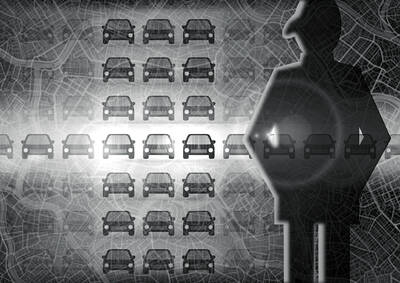Over the past few days, volunteers and Netizens across the nation have turned their compassion into action, serving as rescue workers and searching for typhoon victims and transporting relief aid, or donating money and disseminating rescue and missing persons information via e-mail, Twitter, Plurk, Facebook and other social networking Web sites.
Yet the broadcast and print media continue to be filled with heartrending images of frightened survivors recounting narrow escapes, tearful villages wailing for their missing or dead loved ones and horrifying scenes of villages annihilated by water, rocks and mudslides.
There is only so much that individuals and charity groups can do when a disaster of this magnitude strikes. The most effective resources lie in the hands of the central government, which is the sole organization with the authority to integrate and mobilize rescue operations.
The government so far has rejected offers of material assistance from Japan and the US, with the Ministry of Foreign Affairs saying that Taiwan has “sufficient resources” and that “the disaster relief mechanism is working well.”
President Ma Ying-jeou (馬英九) has ruled out declaring an emergency decree, stating — perhaps not unreasonably — that existing legislation provides the executive with all the authority and resources that are necessary and that government mechanisms are functioning properly.
Arguments over the reach of the law and the utility of a presidential emergency decree will continue for some time, but for the moment, it is dumbfounding to recall that the president, speaking at the Central Emergency Operation Center on Saturday, shifted responsibility to local governments. He said it was those governments that should act as prime movers in rescue work and that the central government would act as an auxiliary. Given that local governments enjoy no authority to deploy military resources, Ma’s little lecture was as nonsensical as his verbaling of the Central Weather Bureau for failing to predict the enormity of the disaster.
Cabinet Spokesman Su Jun-pin (蘇俊賓) on Sunday said the scope and speed of the central government’s rescue work had exceeded that of the 921 Earthquake almost 10 years ago.
But a cursory comparison suggests this is not the case. Hours after the quake struck on Sept. 21, 1999, the Hengshan Military Command Center ordered the deployment of forces to disaster zones and commenced rescue work. Within a day, more than 15,000 personnel were stationed in quake-ravaged regions and advanced helicopters such as the OH-58D, which carries laser range finders and thermal imaging sensors, were deployed for rescue operations.
How ironic it is that a large number of the nation’s military bases are in southern Taiwan, yet three days after Typhoon Morakot slammed into the area on Friday, the military had deployed a mere 8,500 personnel to stricken areas, and without provision for advanced aircraft.
When disaster strikes, every hour counts. The earlier manpower is dispatched on search and rescue efforts, the more lives can be saved. At a time of disaster, leadership must come to the fore to minimize suffering and financial loss.
Clearly, this has not happened, and this failure will emerge as a profound test of the Ma administration’s credibility.
Concerns that the US might abandon Taiwan are often overstated. While US President Donald Trump’s handling of Ukraine raised unease in Taiwan, it is crucial to recognize that Taiwan is not Ukraine. Under Trump, the US views Ukraine largely as a European problem, whereas the Indo-Pacific region remains its primary geopolitical focus. Taipei holds immense strategic value for Washington and is unlikely to be treated as a bargaining chip in US-China relations. Trump’s vision of “making America great again” would be directly undermined by any move to abandon Taiwan. Despite the rhetoric of “America First,” the Trump administration understands the necessity of

US President Donald Trump’s challenge to domestic American economic-political priorities, and abroad to the global balance of power, are not a threat to the security of Taiwan. Trump’s success can go far to contain the real threat — the Chinese Communist Party’s (CCP) surge to hegemony — while offering expanded defensive opportunities for Taiwan. In a stunning affirmation of the CCP policy of “forceful reunification,” an obscene euphemism for the invasion of Taiwan and the destruction of its democracy, on March 13, 2024, the People’s Liberation Army’s (PLA) used Chinese social media platforms to show the first-time linkage of three new

If you had a vision of the future where China did not dominate the global car industry, you can kiss those dreams goodbye. That is because US President Donald Trump’s promised 25 percent tariff on auto imports takes an ax to the only bits of the emerging electric vehicle (EV) supply chain that are not already dominated by Beijing. The biggest losers when the levies take effect this week would be Japan and South Korea. They account for one-third of the cars imported into the US, and as much as two-thirds of those imported from outside North America. (Mexico and Canada, while
I have heard people equate the government’s stance on resisting forced unification with China or the conditional reinstatement of the military court system with the rise of the Nazis before World War II. The comparison is absurd. There is no meaningful parallel between the government and Nazi Germany, nor does such a mindset exist within the general public in Taiwan. It is important to remember that the German public bore some responsibility for the horrors of the Holocaust. Post-World War II Germany’s transitional justice efforts were rooted in a national reckoning and introspection. Many Jews were sent to concentration camps not